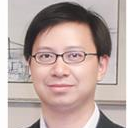Sensors for Structural Health Monitoring of Structures and Infrastructures
A special issue of Sensors (ISSN 1424-8220). This special issue belongs to the section "Physical Sensors".
Deadline for manuscript submissions: closed (13 March 2025) | Viewed by 14966
Special Issue Editors
Interests: structural health monitoring; optical fiber sensors; smart paint; self-healing concrete; damage detection; civil engineering
Interests: structural health monitoring; non-destructive testing; evaluation stress wave research; composite structures
Special Issues, Collections and Topics in MDPI journals
Interests: SHM/NDT techniques; disaster mitigation/monitoring; artificial intelligence (AI) app; internet of things (IoT) app; smart construction
Interests: structural health monitoring; multi-physical monitoring, assessment, and mitigation of geohazards; performance evaluation of underground pipelines and tunnels
Special Issues, Collections and Topics in MDPI journals
Special Issue Information
Dear Colleagues,
Structural Health Monitoring (SHM) presents a systematic, objective, and predictive approach to structural assessment that enables the early detection of potential issues, informed decision-making in maintenance practices, and the enhancement of overall structural safety and durability. SHM is a multidisciplinary field that has attracted professionals and researchers from diverse industries; each brings unique expertise in areas such as sensors, advanced materials, data communication, artificial intelligence, and system integration. The implementation of SHM projects involves the deployment of a diverse array of sensors, ranging from conventional ones, like accelerometers, electrical strain gauges, and displacement transducers, to more advanced options, like distributed optical fiber sensors, smart paints, computer-vision-based sensing, and acoustic emission sensors. Extracting damage features from sensor data allows for the assessment of structural integrity and the host structure's condition, providing crucial information about the presence, location, severity, and prognosis of any damage.
The specific operating constraints related to a particular engineering domain where SHM is to be implemented dictate the ideal type of sensing for the application. Designing and adapting sensors to meet the distinct sensing requirements of each use case is crucial in ensuring a successful SHM project. Here, the application of innovative sensing principles from diverse disciplines and the cross-fertilization of ideas across various engineering fields will significantly contribute to realizing the objectives of Structural Health Monitoring (SHM).
This Special Issue invites contributions that address the use of innovative sensors, sensing principles, or the innovative use of traditional sensors and transducers to solve the sensing needs of a particular SHM project. In particular, papers should clearly show novel contributions and innovative applications covering any of the following topics, or others, within Structural Health Monitoring:
- Novel sensors.
- Optical fiber sensors.
- Smart paints.
- Luminescence-based sensing systems, e.g., chemiluminescence.
- Large strain sensors.
- Sensors for extreme environments.
- Vision-based sensors.
- IoT and cloud-linked sensors.
- Pattern recognition and deep learning with smart sensor systems.
- Self-sensing composite materials.
- Bio-inspired sensor networks.
- Self-sensing and self-healing concrete materials.
Dr. Kevin Kuang
Prof. Dr. Wing Chiu
Prof. Dr. Seunghee Park
Prof. Dr. Honghu Zhu
Guest Editors
Manuscript Submission Information
Manuscripts should be submitted online at www.mdpi.com by registering and logging in to this website. Once you are registered, click here to go to the submission form. Manuscripts can be submitted until the deadline. All submissions that pass pre-check are peer-reviewed. Accepted papers will be published continuously in the journal (as soon as accepted) and will be listed together on the special issue website. Research articles, review articles as well as short communications are invited. For planned papers, a title and short abstract (about 250 words) can be sent to the Editorial Office for assessment.
Submitted manuscripts should not have been published previously, nor be under consideration for publication elsewhere (except conference proceedings papers). All manuscripts are thoroughly refereed through a single-blind peer-review process. A guide for authors and other relevant information for submission of manuscripts is available on the Instructions for Authors page. Sensors is an international peer-reviewed open access semimonthly journal published by MDPI.
Please visit the Instructions for Authors page before submitting a manuscript. The Article Processing Charge (APC) for publication in this open access journal is 2600 CHF (Swiss Francs). Submitted papers should be well formatted and use good English. Authors may use MDPI's English editing service prior to publication or during author revisions.
Keywords
- novel sensors
- optical fiber sensors
- smart paints
- luminescence-based sensing systems, e.g., chemiluminescence
- large strain sensors
- sensors for extreme environments
- vision-based sensors
- IoT and cloud-linked sensors
- pattern recognition and deep learning with smart sensor systems
- self-sensing composite materials
- bio-inspired sensor networks
- self-sensing and self-healing concrete materials
Benefits of Publishing in a Special Issue
- Ease of navigation: Grouping papers by topic helps scholars navigate broad scope journals more efficiently.
- Greater discoverability: Special Issues support the reach and impact of scientific research. Articles in Special Issues are more discoverable and cited more frequently.
- Expansion of research network: Special Issues facilitate connections among authors, fostering scientific collaborations.
- External promotion: Articles in Special Issues are often promoted through the journal's social media, increasing their visibility.
- Reprint: MDPI Books provides the opportunity to republish successful Special Issues in book format, both online and in print.
Further information on MDPI's Special Issue policies can be found here.









